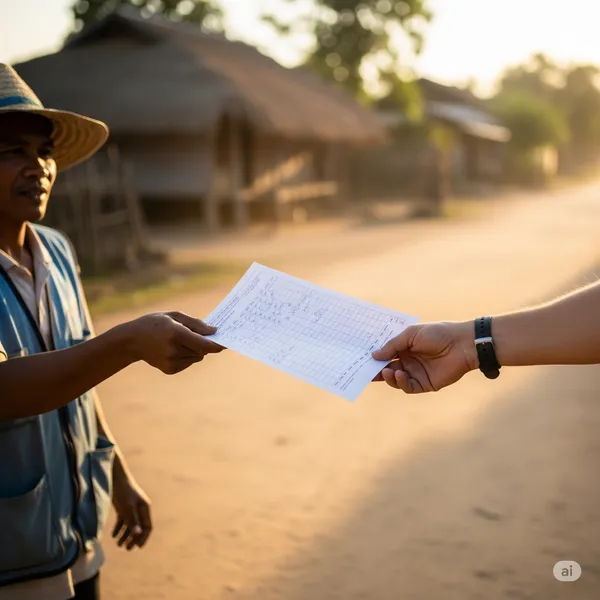Operational Problem Solving Protocols in High-Volatility Environments
Published on: Thu Jun 18 2015 by Magali Van Coppenolle
How do you solve problems in conflict and post-conflict countries? The nature and context of problems encountered in post-conflict countries often distract from applying proven methods.
In addition, narratives surrounding the world’s most difficult places often hide complexities and nuances, which prove crucial when attempting to change or reforms institutions. But the basics, approaches adopted in stable environments, remain: analytical rigor and a solution-oriented spirit.
Moving beyond preconceived ideas and generic labels, here are a Top 5 of particularities that problem-solvers are faced with in conflict and post-conflict contexts.
Five issues that a problem solver must deal with in difficult places
1. Fragile country does not necessarily mean fragile systems. To the contrary, they can be extremely resilient and hence, even more difficult to change. In other words, a post-conflict country is not a “blank page” for which any institutional reform will do. The labeling of such countries as fragile has lead to much misunderstanding with respect to the nature of their existing systems and institutions. More often than not, the few systems that have survived and adapted through conflict and abuse, sometimes for decades, are extremely resilient.
More often than not, the few systems that have survived and adapted through conflict and abuse, sometimes for decades, are extremely resilient.
Systems may be poorly run, dysfunctional and inefficient, but they are not fragile. In such systems, personal links bond people, not contracts, and rules are personalized instead of generic. This makes for mechanisms that can be fundamentally resistant to change.
2. Outcomes of decision-making processes can be random due to extreme agility and openness. With few rules guiding behavior and rapidly evolving environments, versatility is high and predictability hence, low. Decisions can be made with surprising agility. Organizational scientists have described such systems as “open”.
Open systems leave much room for opportunistic behavior and random decision-making outcomes. The latter is more worrying as it is not predictable. Organizational scientists studying decision-making and problem-solving in organizations have described similar patterns “the Garbage-Can model of organizational choice”, which is originally derived from research on decision-making in the academic sphere.
The insight from this tradition is that a decision-making process is freely affected by for factors: (i) There are Decision points, the windows and for decisions i.e board meetings, committees or phone calls between people holding power. However, rules guiding decision points can be more or less clear; (ii) there are many Actors, whose interactions and behaviors can vary in predictability; (iii) there are Solutions, which can or cannot be promoted by various actors and that can be developed completely independently of; (iv) the Problems.
According to the Garbage Can model, what solution gets attached to what problem, with what actor and when, can be largely due to chance. To an extent, this phenomenon exists in any organization, but the unpredictability in a fragile state can be mindboggling. In such environment, any rule, for the participation of actors or timing of decisions is vague at best. The set of actors involved tend to be larger, including i.e. external partners. Solutions are often designed elsewhere and problems are routinely ill defined.
Occasionally, these factors and streams all meet: money is put behind activities, things happen and decisions are made, although strange at times. But, this complicates the problem solving. Managing successful problem solving in such circumstances is, therefore, very much about understanding what guides and influences those decision parameters, including the quality of their structure.
Ultimately, with a good grasp of those parameters, one can choose to work with them “as-is” by leveraging on the possibilities they offer for opportunistic behavior. Alternatively, it is possible to invest time and resources to structure the streams and increase predictability and certainty surrounding decision-making processes.
3. Data, the raw material of all problem solving, is not readily available and its variance is high. This reflects real underlying variation. System behaviors in fragile contexts are difficult to understand due to the lack of readily available data-points. It is then useless to have a big data and hadoop capable computing techniques when there is no data to feed the analytics. Digitization of old fashioned paper records or other labor-intensive structured data collection is often necessary. This is, however, more time and resource intensive than most are used to and unfortunate short cuts are frequently done. We see much problem-definition go very wrong and the recommended changes or designs being consequently misguided.
As data is collected and analyzed, exceptionally high variance in data can be observed and very few patterns hold. The observation holds true whether the data is generated as by-product of administrative processes or collected through surveys and interviews. Large variance and few patterns make it rather difficult to describe system behavior precisely, which is a significant departure from what can be observed in more mature and organized environments.
Importantly, however, this is not a measurement uncertainty but reflects a real underlying variance in behavior. As rules and processes are personalized within institutions, there might be as many ways to perform a task, as there are employees. There are real, and at times significant, differences in how tasks and workflows are performed depending on persons, entities and even the time of the day. Soliciting opinions on how systems function can reveal a large range of different explanations.
This variance, which translates in the data, is already an insight in itself in the degree of personalization and predictability within a system. Analyzing the data further, it is often most helpful to stick to basic analytics and bold patterns. Those are usually sufficient to offer necessary insight into a specific’s system behavior.
4. Do not underestimate the availability of talent and openness of the minds, but do not assume that there are structures that allow talents to function effectively. Today, the world’s most difficult places are, perhaps paradoxically, more exposed to the world than the world is exposed to them. Ideas and role models flow extremely fast and while the young accountant lady in the dusty office may fill out antiquated forms by hand for her work, there is more often than not her smartphone or tablet in the vicinity with the Facebook app running. Large-scale immigration and diaspora communities also contribute fundamentally to this free flow of ideas.
The talent and the openness for role modeling exist but the structure and organizations, which could guide the minds into productive collective behavior, do not. The consequence is that the mobilization of minds may be less of a challenge than expected but it might not translate into organizational changes, even if all employees, including leadership, are on board with reform. As we usually work with organizations that predominantly consist of thinking-workers, we very often feel that the challenge is in fact about unlocking their capabilities, rather than individual training and skills development. The challenge is to create circumstances that enable them to put their talent to use, interact effectively with and within their organization and receive responsibility for change and impact.
As we usually work with organizations that predominantly consist of thinking-workers, we very often feel that the challenge is in fact about unlocking their capabilities, rather than individual training and skills development.
5. The source of the uncertainty is different. All organizations are, although to various extents, faced with uncertainty. However, the underlying causes of uncertainty in conflict and post-conflict environments are quite different.
Elsewhere, organizations are faced with uncertainty that is primarily exogenous. What will the future bring? What is the next business model? What is the next financial bubble? Businesses, generally, will handle risks by trying to gain familiarity with the issues at hand, i.e. by taking initial steps towards understanding new technology, applications, markets or business models that may be on the horizon, thereby decreasing uncertainty. They are turning the exogenous risk into an internal capability.
In conflict and post-conflict zones, however, “the risks are raw” and much more straightforward to deal with, as one notorious investor puts it.
This is similar for a business in high-risk zones, although the exogenous risk may include guys with guns. In conflict and post-conflict zones, however, “the risks are raw” and much more straightforward to deal with, as one notorious investor puts it.
The situation may be truly different for governments in difficult places. While the security risks are also real, there is also a significant endogenous uncertainty factor. The solutions and objectives will mostly be familiar and there is less need to come up with genuinely fresh end-state concept. (Though truly novel solutions, of course, can be highly valuable.) What will be much less familiar is the ‘how to get there’ question.
The core problem, in fragile contexts, is that there are fundamental uncertainties about an institution’s capability to manage change and operate in new ways. This uncertainty may stem from both internal sources and from the operating environment including political leaders and external partners, availability of external and internal financing. However, such factors are rarely completely exogenous. Strictly speaking, the uncertainty is mostly driven by the concept of (un) familiarity with new ways of functioning. It is nevertheless critical to underline that challenges will not arise from figuring out what the end-state will look like, but mostly from how to get there and how to handle obstacles.
Ivar Strand is founder and Managing Partner of Abyrint. Magali Caroline Van Coppenolle is a Senior Associate with Abyrint.



